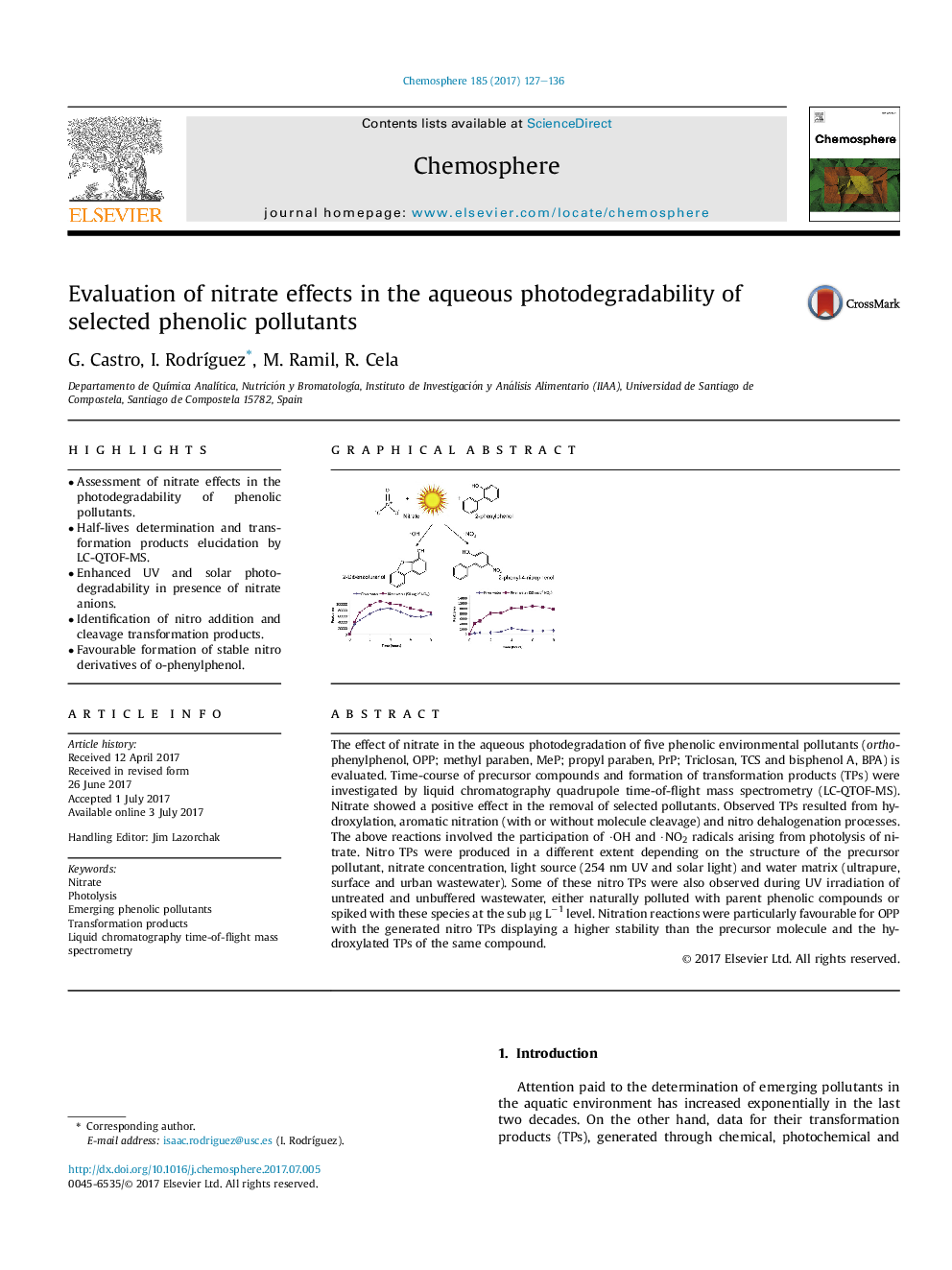| Article ID | Journal | Published Year | Pages | File Type |
|---|---|---|---|---|
| 5746686 | Chemosphere | 2017 | 10 Pages |
â¢Assessment of nitrate effects in the photodegradability of phenolic pollutants.â¢Half-lives determination and transformation products elucidation by LC-QTOF-MS.â¢Enhanced UV and solar photodegradability in presence of nitrate anions.â¢Identification of nitro addition and cleavage transformation products.â¢Favourable formation of stable nitro derivatives of o-phenylphenol.
The effect of nitrate in the aqueous photodegradation of five phenolic environmental pollutants (ortho-phenylphenol, OPP; methyl paraben, MeP; propyl paraben, PrP; Triclosan, TCS and bisphenol A, BPA) is evaluated. Time-course of precursor compounds and formation of transformation products (TPs) were investigated by liquid chromatography quadrupole time-of-flight mass spectrometry (LC-QTOF-MS). Nitrate showed a positive effect in the removal of selected pollutants. Observed TPs resulted from hydroxylation, aromatic nitration (with or without molecule cleavage) and nitro dehalogenation processes. The above reactions involved the participation of ·OH and ·NO2 radicals arising from photolysis of nitrate. Nitro TPs were produced in a different extent depending on the structure of the precursor pollutant, nitrate concentration, light source (254 nm UV and solar light) and water matrix (ultrapure, surface and urban wastewater). Some of these nitro TPs were also observed during UV irradiation of untreated and unbuffered wastewater, either naturally polluted with parent phenolic compounds or spiked with these species at the sub μg Lâ1 level. Nitration reactions were particularly favourable for OPP with the generated nitro TPs displaying a higher stability than the precursor molecule and the hydroxylated TPs of the same compound.
Graphical abstractDownload high-res image (131KB)Download full-size image
